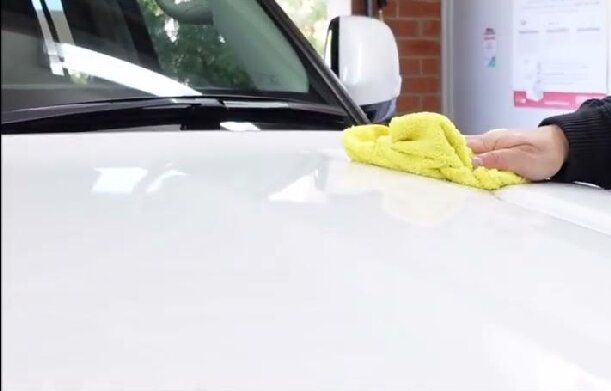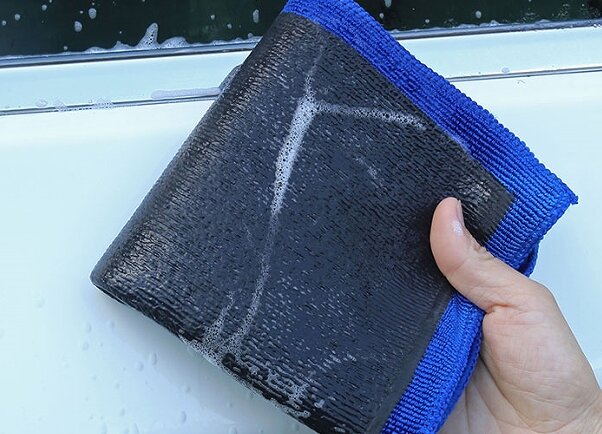Paint Protection at Nissan Car Dealers: Ensuring Long-Lasting Shine and Durability
Content Menu
Paint Protection at Nissan Car Dealers: Ensuring Long-Lasting Shine and Durability
●Why Paint Protection Matters for Your Nissan
●Different Types of Paint Protection
●Preparing Your Nissan for Paint Protection
>>The Role of Clay Bars in Surface Preparation
>>Clay Mitts and Clay Towels: Efficient Alternatives
>>Removing Hard Water Spots from Glass
●Applying Paint Protection at Your Nissan Dealer
Paint Protection at Nissan Car Dealers: Ensuring Long-Lasting Shine and Durability
When you purchase a new vehicle, such as a Nissan, you want it to retain its showroom shine and pristine condition for as long as possible. The vehicle’s paint plays a vital role in not only the car’s appearance but also in its overall longevity. Over time, however, exposure to environmental elements, road debris, and regular wear and tear can cause the paint to degrade, fade, or get scratched. This is where paint protection becomes a crucial service, especially at your trusted Nissan car dealer.
In this article, we will explore the importance of paint protection for your Nissan, how it works, and the essential detailing products like clay bars, clay mitts, clay towels, and other tools used to prepare your car for the protection it deserves.

Why Paint Protection Matters for Your Nissan
Your Nissan’s paint is more than just for aesthetics—it’s an essential part of the car's protection against the elements. The paint acts as a barrier against water, UV rays, road salt, and other contaminants that can lead to rust, fading, and other forms of damage. Over time, these elements can wear down the paint and expose the underlying metal, which can lead to costly repairs.
Paint protection helps preserve the integrity of your car’s exterior by adding an extra layer of defense against these damaging factors. It enhances the car’s gloss, makes it easier to clean, and increases its overall longevity. With proper paint protection, your Nissan will not only look great but also maintain its value.
Different Types of Paint Protection
There are several options for paint protection, each offering unique benefits. These include:
-
Paint Sealants: A synthetic product applied to the vehicle’s paint, which forms a protective layer to prevent contaminants from adhering to the surface. Paint sealants generally last for several months before needing to be reapplied.
-
Ceramic Coatings: Ceramic coatings are a more advanced form of paint protection. Made of nano-technology, they bond with the car’s paint to create a durable, hydrophobic layer that repels water, dirt, and other pollutants. Ceramic coatings can last for years, providing long-term protection with minimal maintenance.
-
Paint Protection Films (PPF): PPF is a transparent, adhesive film that is applied directly to the paint surface. It offers protection against scratches, chips, and road debris while maintaining the car’s appearance. Unlike other options, PPF is physically applied to the vehicle’s body and can be easily replaced if damaged.
Each of these options can be offered by your Nissan dealer, depending on your preference and the level of protection you need. In addition to these treatments, proper surface preparation is essential to ensure that the protection lasts as long as possible.
Preparing Your Nissan for Paint Protection
Before applying any form of paint protection, it's crucial to properly prepare the car’s surface. A clean, smooth, and contaminant-free surface will allow the protection product to bond effectively and provide better results. This is where products like clay bars, clay mitts, and clay towels come into play.
The Role of Clay Bars in Surface Preparation
A clay bar is an essential tool for detailing, and it plays a critical role in preparing your Nissan’s paint for protection. Over time, contaminants like tree sap, industrial fallout, and road tar can become embedded in the car’s paint. Even after a thorough wash, these contaminants can remain on the surface, affecting the paint’s smoothness and the ability of the protection product to adhere properly.
Here’s how you can use a clay bar to prepare the surface of your Nissan for paint protection:
-
Wash the Car: Before using the clay bar, ensure the car is clean. Wash the vehicle with soap and water to remove any dirt and loose debris.
-
Lubricate the Surface: Spray a lubricant or soapy water on the area where you plan to use the clay bar. This ensures the clay glides smoothly across the surface without causing scratches.
-
Clay the Surface: Gently rub the clay bar over the surface of the car in back-and-forth motions. As you work, you’ll feel the clay begin to pick up contaminants. Don’t apply too much pressure—let the clay do the work.
-
Wipe Down: After claying the entire vehicle, wipe down the surface with a clean microfiber towel to remove any residue.
By using a clay bar, you remove surface contaminants, leaving a smooth and clean surface that is ideal for paint protection. This step is essential for ensuring that the protection product bonds well and lasts longer.
Clay Mitts and Clay Towels: Efficient Alternatives

For those who prefer a quicker or more ergonomic solution, clay mitts and clay towels can be used as alternatives to traditional clay bars. These tools work in much the same way but allow for more efficiency and comfort:
-
Clay Mitts: A clay mitt is a glove that fits over your hand and is embedded with clay particles. It’s ideal for large surfaces like the hood, roof, and sides of the car, as it allows for faster application and a more even finish.
-
Clay Towels: Clay towels are microfiber towels that are infused with clay particles. These towels can be used to wipe down the car’s surface, lifting contaminants in the process. They’re a great option for detailing smaller areas or those hard-to-reach spots.
Both tools offer a similar effect to the clay bar but in a more user-friendly form, making them ideal for those who want to streamline the surface preparation process.
Car Detailing and Polishing
After claying, the next step in the preparation process is polishing the paint. Polishing is important because it removes light scratches, swirl marks, and oxidation that could prevent the paint protection from bonding properly. It also restores the gloss and shine of the paint, making it look like new again.
Using a high-quality polish designed for automotive paint, a professional detailer will use a polishing pad or machine to gently buff the paint surface. This process ensures that the paint is as smooth and flawless as possible before applying any paint protection product.
Removing Hard Water Spots from Glass
In addition to the car’s paint, it’s important to ensure that the windows and glass surfaces are free of any contaminants. Hard water spots can leave behind cloudy, streaky marks on your car’s glass, which can diminish its clarity and overall appearance. These spots are typically caused by mineral deposits left behind when water evaporates from the glass surface.
To remove hard water spots, a clay bar or clay towel can be used on the glass, just like on the paint. Gently rubbing the clay over the glass will lift the mineral deposits, restoring clarity and providing a smooth surface. This step is especially important for ensuring that the glass maintains its shine and that no contaminants remain that could impact the overall appearance of the vehicle.
Applying Paint Protection at Your Nissan Dealer
Once the surface is thoroughly cleaned and prepped, the final step is the application of the paint protection. Whether you choose a paint sealant, ceramic coating, or paint protection film, your Nissan dealer will apply the product using specialized techniques and equipment to ensure an even and smooth application.
-
Paint Sealants: These are applied in thin layers and buffed into the paint to form a protective coating.
-
Ceramic Coatings: Ceramic coatings require a careful application process to ensure that the product bonds correctly with the paint. A high-quality coating will provide superior protection against water, dirt, and UV rays.
-
Paint Protection Film (PPF): PPF is applied directly to the painted surface and can be customized to fit specific areas of the car, such as the hood, bumpers, or side mirrors.
The application of paint protection not only enhances the appearance of your Nissan but also ensures that it is shielded from environmental contaminants, reducing the likelihood of scratches, fading, and corrosion.
Conclusion
Paint protection is a crucial service offered at Nissan car dealers, and it plays an essential role in maintaining the longevity and appearance of your vehicle. By using products like clay bars, clay mitts, clay towels, and other detailing tools, you can ensure that your car’s surface is properly prepared for protection. Whether you choose a paint sealant, ceramic coating, or paint protection film, investing in paint protection at your Nissan dealer will help keep your vehicle looking its best, extending its lifespan and preserving its value for years to come.






















